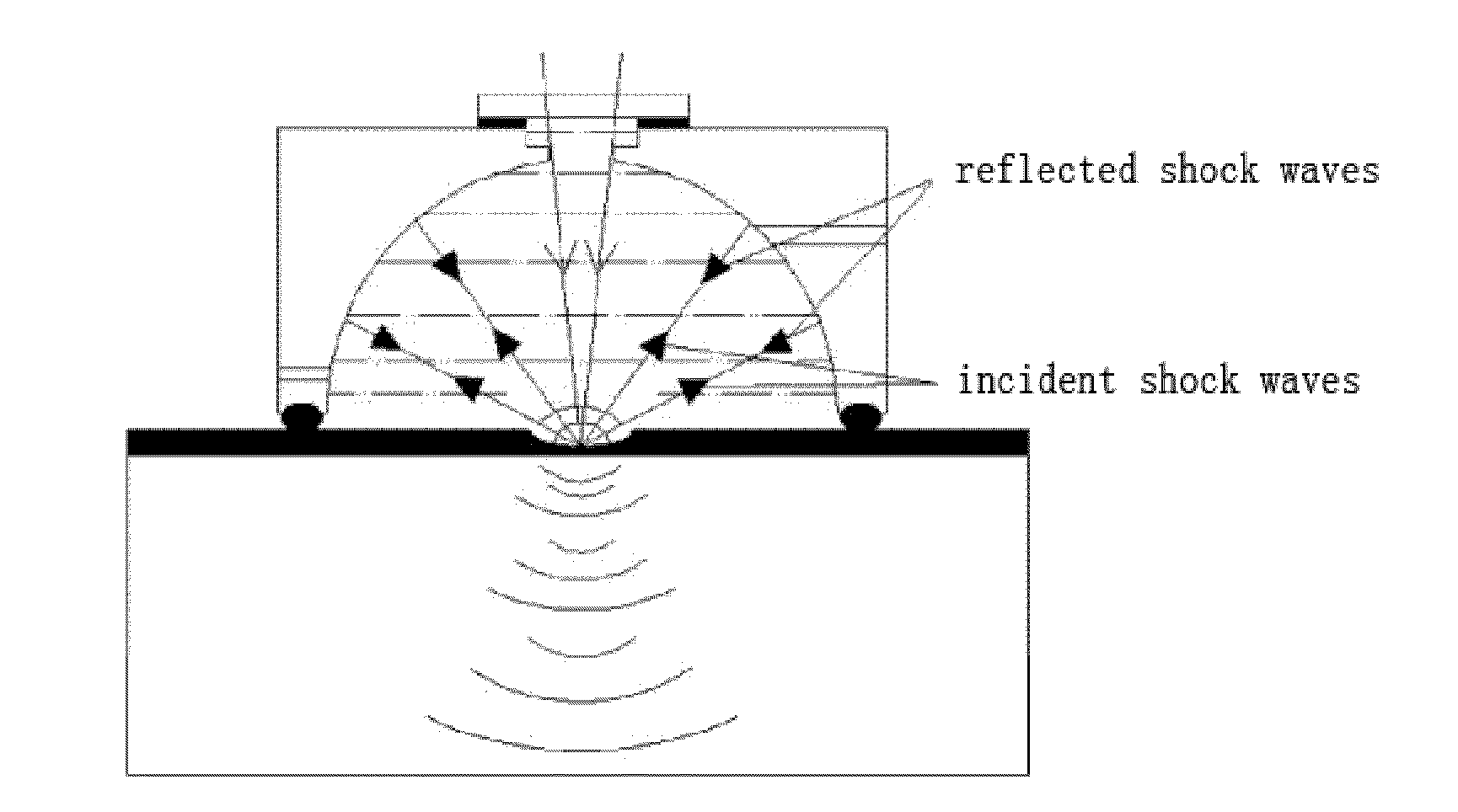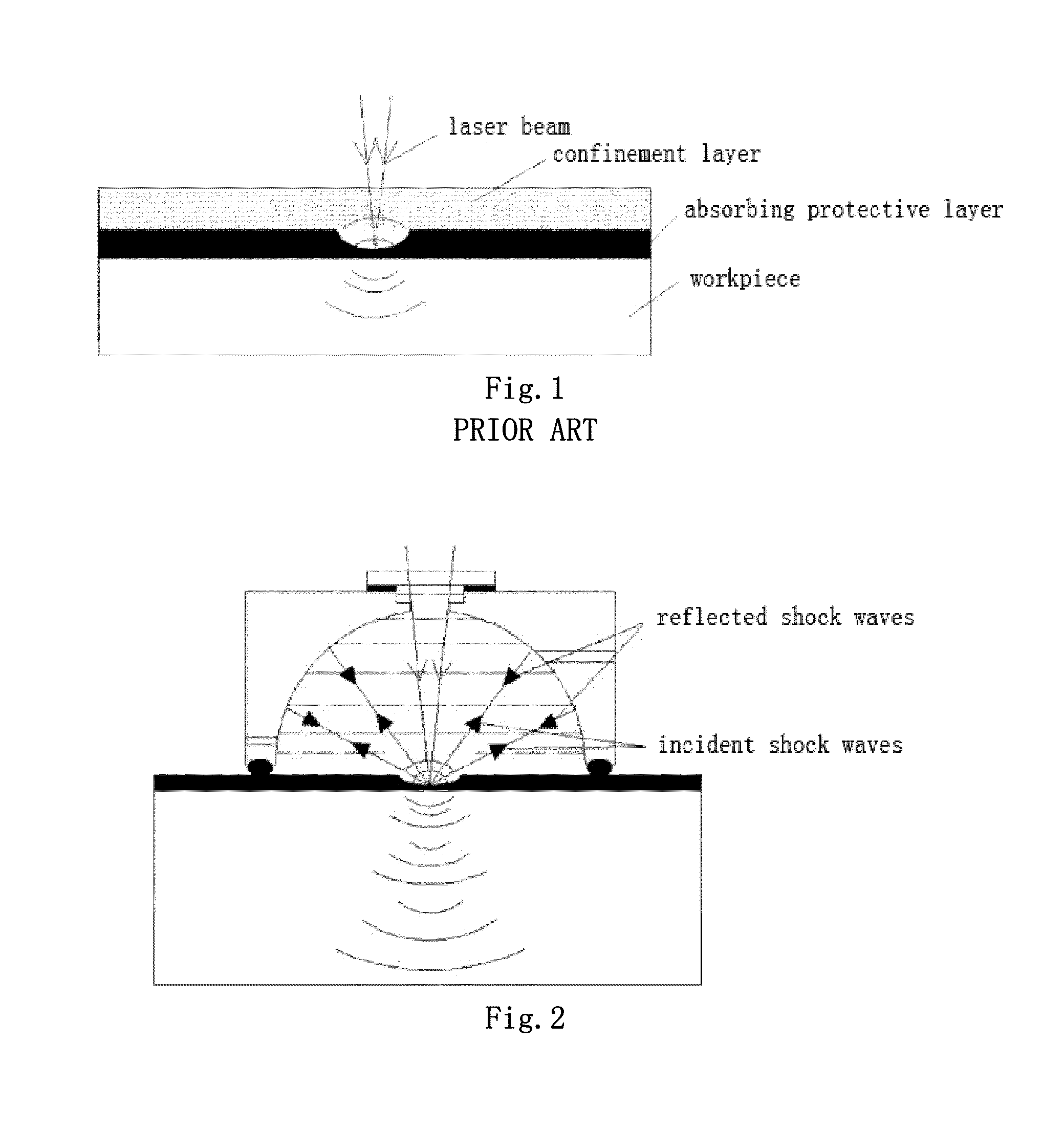Laser Shock Peening Apparatus for Surface of Workpiece, and Laser Shock Peening Method
a technology of laser shock peening and workpiece, which is applied in the direction of laser beam welding apparatus, welding apparatus, manufacturing tools, etc., can solve the problems of low energy utilization ratio, extremely high price of laser, and nearly 50% energy loss
- Summary
- Abstract
- Description
- Claims
- Application Information
AI Technical Summary
Benefits of technology
Problems solved by technology
Method used
Image
Examples
embodiment 1
[0067]In the present embodiment, a laser shock peening apparatus, as shown in FIG. 4, comprises a laser generating unit 10 and a resonant cavity 19 with an open end, and the open end of the resonant cavity 19 hermetically contacts with the surface of an absorbing protective layer 6, thereby forming a “backoff” structure. The resonant cavity 19 is further provided with a laser inlet 13, a fluid inlet 22 and a fluid outlet 5.
[0068]The absorbing protective layer 6 is provided on the surface of the workpiece 4 to be processed, in the present embodiment, the workpiece 4 is a metal workpiece, and the absorbing protective layer 6 is a piece of aluminum foil. The confinement layer 20 is provided on the surface of the absorbing protective layer 6. The confinement layer 20 is located in the resonant cavity 19, and the confinement layer 20 is deionized water injected through the fluid inlet 22. The deionized water is pumped into the resonant cavity 19 through the pipes 8 and the fluid inlet 22...
embodiment 2
[0087]In the present embodiment, a laser shock peening apparatus, as shown in FIG. 12, comprises a laser generating unit and a resonant cavity with an open end, wherein, the open end of the resonant cavity and the surface of an absorbing protective layer are contact with each other in a non-hermetical contacting manner, thereby forming a “backoff” structure. The resonant cavity is further provided with a laser inlet, a fluid inlet and a fluid outlet.
[0088]The absorbing protective layer is provided on the surface of the workpiece to be processed, in the present embodiment, the workpiece is a metal workpiece, and the absorbing protective layer is a piece of aluminum foil. The confinement layer is provided on the surface of the absorbing protective layer. The confinement layer is located in the resonant cavity, and the confinement layer is gas, such as air, nitrogen gas and the like, injected through the fluid inlet. The gas is pumped into the resonant cavity through the fluid inlet by...
PUM
| Property | Measurement | Unit |
|---|---|---|
| thickness | aaaaa | aaaaa |
| energy | aaaaa | aaaaa |
| flow rate | aaaaa | aaaaa |
Abstract
Description
Claims
Application Information
 Login to View More
Login to View More - R&D
- Intellectual Property
- Life Sciences
- Materials
- Tech Scout
- Unparalleled Data Quality
- Higher Quality Content
- 60% Fewer Hallucinations
Browse by: Latest US Patents, China's latest patents, Technical Efficacy Thesaurus, Application Domain, Technology Topic, Popular Technical Reports.
© 2025 PatSnap. All rights reserved.Legal|Privacy policy|Modern Slavery Act Transparency Statement|Sitemap|About US| Contact US: help@patsnap.com



